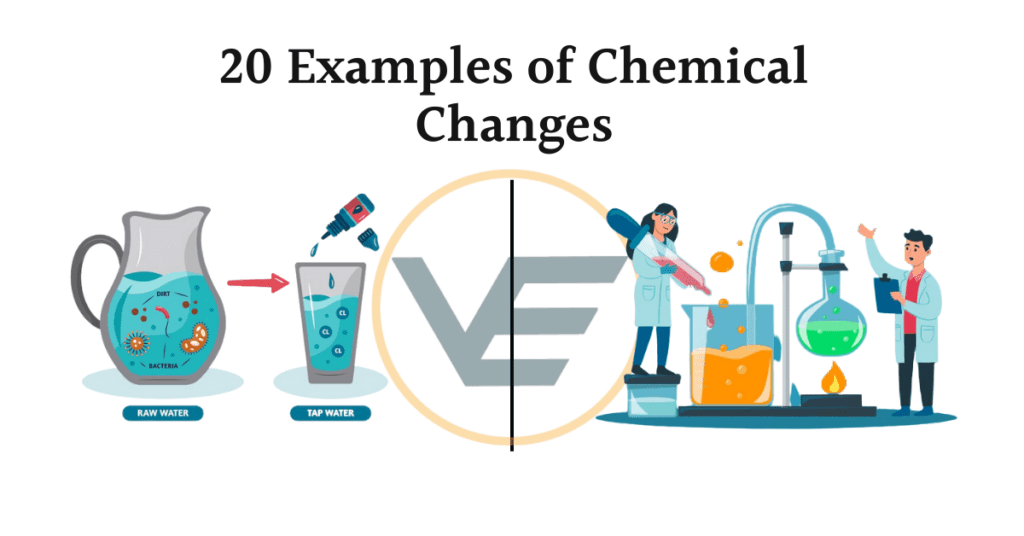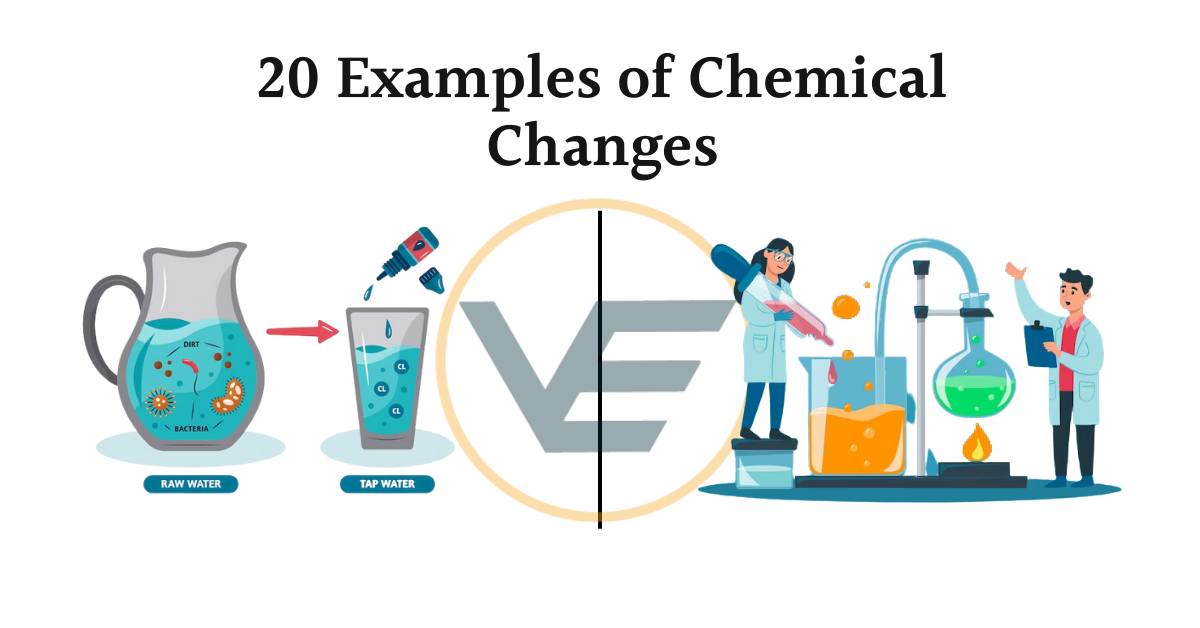Introduction of Chemical Changes: Chemical changes, also known as chemical reactions, are fundamental processes in which substances undergo a transformation, resulting in the formation of new substances with different properties. These changes involve the breaking and forming of chemical bonds, leading to the rearrangement of atoms and molecules.
Importance of Chemical Changes
The importance of chemical changes lies in their wide-ranging impact on various aspects of our lives and the world around us. Chemical changes are fundamental processes that drive countless natural and synthetic phenomena, contributing to advancements in science, technology, industry, and medicine. Here are some key points highlighting the importance of chemical changes:
1. Everyday Life: Chemical changes play a crucial role in everyday activities such as cooking, baking, and digestion. They are responsible for the flavors, colors, and textures of the food we eat, making culinary experiences enjoyable.
2. Industry and Manufacturing: Chemical changes are the basis for numerous industrial processes, including the production of metals, chemicals, pharmaceuticals, plastics, and various consumer goods. These industries rely on chemical reactions to create new materials and products that enhance our quality of life and drive economic growth.
3. Energy Production: Many energy production processes, such as combustion of fossil fuels and nuclear reactions, involve chemical changes. These processes provide the energy needed to power homes, industries, and transportation, supporting modern civilization’s functioning.
4. Environmental Processes: Chemical changes are essential in various environmental processes, including photosynthesis, nitrogen fixation, and carbon cycling. These processes play a vital role in maintaining the balance of ecosystems and the overall health of the planet.
5. Medicine and Healthcare: Chemical changes are central to drug development and pharmaceuticals. Understanding how chemicals interact with biological systems allows scientists to create medicines that treat diseases, alleviate symptoms, and improve overall health.
6. Environmental Remediation: Chemical changes are used in environmental remediation to clean up pollution and hazardous waste. Techniques like bioremediation and chemical oxidation help restore contaminated sites and protect the environment.
7. Material Science: Chemical changes are critical in material science, where researchers create new materials with specific properties and applications. This field contributes to innovations in electronics, construction, aerospace, and many other industries.
8. Scientific Research: Chemical changes serve as a foundation for scientific research across various disciplines. Understanding chemical reactions enables scientists to investigate natural phenomena, analyze matter, and explore the behavior of elements and compounds.
9. Technology Advancements: Chemical changes drive technological advancements, from the development of efficient batteries to advancements in nanotechnology and materials engineering.
10. Sustainable Practices: Chemical changes are essential in developing sustainable practices, such as renewable energy technologies, waste recycling, and green chemistry, which aim to minimize environmental impact and conserve resources.
Overall, the importance of chemical changes extends far beyond the boundaries of the laboratory. They are intrinsic to human progress, innovation, and the preservation of the environment. Emphasizing sustainable and responsible chemical practices is essential for ensuring a better future for our planet and future generations.

Examples of chemical changes
Here are 20 examples of chemical changes:
- Combustion: Burning of a substance, such as wood or gasoline, in the presence of oxygen, producing heat, light, and new chemical compounds like carbon dioxide and water.
- Rusting: The reaction of iron or steel with oxygen and moisture, leading to the formation of iron oxide (rust).
- Digestion: The breakdown of food in the body through enzymatic reactions, converting complex molecules into simpler ones for absorption.
- Photosynthesis: The process by which plants convert carbon dioxide and water into glucose and oxygen, using sunlight as energy.
- Fermentation: Conversion of sugars into alcohol and carbon dioxide by microorganisms, as seen in the production of alcoholic beverages and bread-making.
- Tarnishing: The reaction of metals, like silver, with sulfur compounds in the air, resulting in the formation of a dark patina on the surface.
- Cooking: Changes in the chemical composition of food during cooking, leading to enhanced flavors and textures.
- Baking: The chemical reactions that occur during baking, causing dough to rise and form a baked product.
- Bleaching: The use of chemical agents to remove or alter the colors of materials, such as fabrics or paper.
- Digestion of Hydrogen Peroxide: Decomposition of hydrogen peroxide into water and oxygen gas.
- Oxidation of Metals: The reaction of metals with oxygen, leading to the formation of metal oxides.
- Tanning: The chemical treatment of animal hides to convert them into leather.
- Pickling: Preservation of food by immersing it in an acidic solution, causing changes in taste and texture.
- Electroplating: Coating an object with a thin layer of metal using electrolysis.
- Explosions: Rapid chemical reactions releasing a large amount of energy, as seen in fireworks or detonations.
- Neutralization: The reaction between an acid and a base to form salt and water.
- Ripening of Fruits: The breakdown of complex carbohydrates into sugars during fruit ripening.
- Burning of Fuels: The combustion of fossil fuels to release energy for various applications.
- Chemiluminescence: Production of light through chemical reactions, as seen in glow sticks.
- Polymerization: The process of combining monomers to form polymers, like in the production of plastics.
Overview of Chemical Changes:
- Chemical changes are essential phenomena that occur in various natural and synthetic processes. They are characterized by the formation of new substances with distinct properties from the original ones. During a chemical reaction, bonds between atoms are broken and reformed, resulting in a change in the molecular structure of the substances involved.
- These changes play a vital role in our daily lives and in industries such as manufacturing, agriculture, and healthcare. Understanding chemical reactions allows scientists and researchers to develop new materials, drugs, and technologies that improve our quality of life and address global challenges.
- It is important to differentiate chemical changes from physical changes, which involve alterations in the state or appearance of a substance without changing its chemical composition. Recognizing and understanding chemical changes are essential in fields like chemistry and environmental science, contributing to advancements in various scientific disciplines and the development of sustainable practices.

